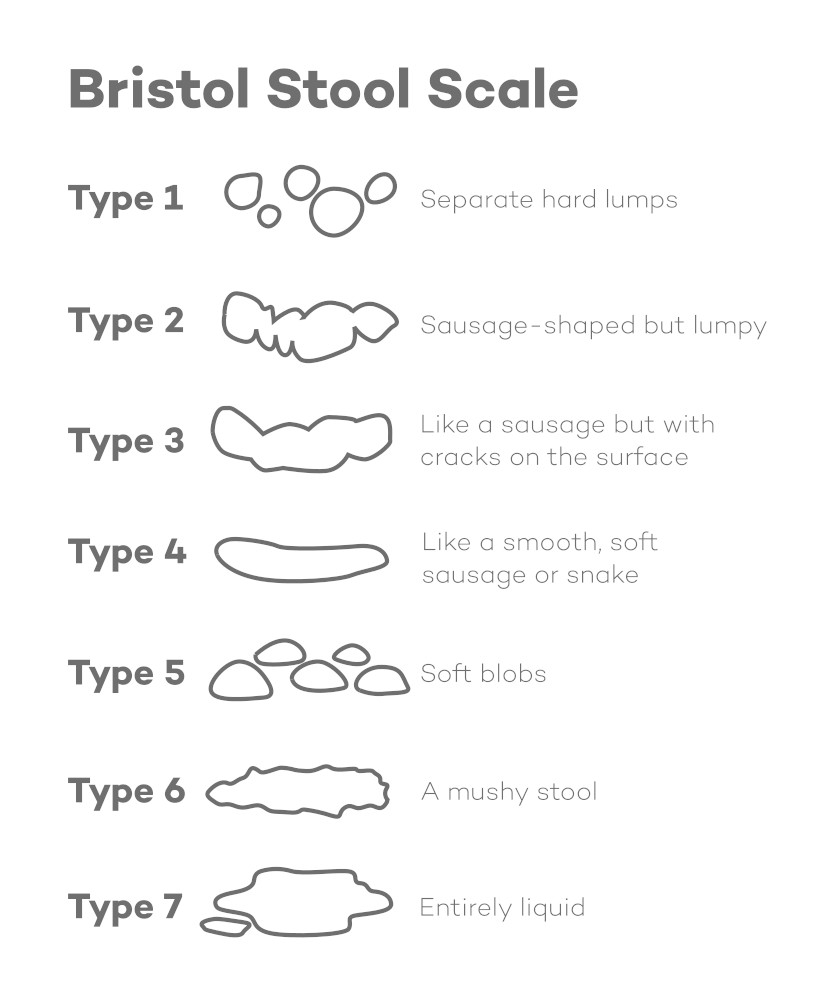Author: Katri Merisalu, nutritional therapist at Elsavie
What is poo, or stool, anyway?
Poo, or stool, mainly consists of undigested food, proteins, salts, and other components produced in the intestines.
Why does it matter how often we go to the toilet?
As a nutritional therapist, I always ask my clients about the frequency of their bowel movements. This may seem like an insignificant health indicator, but it’s actually one of the easiest ways to figure out if you might have health problems.
What should you note about your stool frequency?
- A ‘healthy’ stool frequency can mean you go to the toilet anywhere between three times a day to three times a week.
- People are different, and so is the frequency and timing of their bowel movements. Some of us go to the toilet immediately after waking up, while others do so after breakfast, after drinking coffee, or in the middle of the workday.
- Defecating less than 3 times a week, however, indicates constipation.
- And if you have to empty your bowels more than 3 times a day, you probably have diarrhoea.
- In both cases, you should make sure that the situation does not last longer than several days or even weeks. If it does, contact your family physician. Especially if you have severe pains in the lower body or notice blood in your stool.
What affects digestion and stools?
- Nutrition – the most important thing in nutrition is consuming sufficient fibre and water. Fibre is contained, for example, in whole-grain products, root vegetables, and fruits, which help to increase the mass of your stools, thereby ensuring healthy stools.
- Exercise – physical activity, such as walking, helps food better transit the digestive system. If you are active, so is your gut!
What does the colour of your stool indicate?
The colour of a normal stool ranges from light yellow to brown and almost black. The classic brown colour comes from bile in the stool.
White or clay grey stools can indicate problems with the liver or pancreas.
Black or reddish stools can indicate gastrointestinal bleeding. If this occurs more than once, contact your doctor immediately.
Note, however, that some foods can also make your stool more colourful. For example, blue colouring in your poo can be caused by eating blueberries, purple by beetroot, orange by pumpkin, or green by large quantities of green vegetables.
Similarly, the colour of your poo can also be affected by food colourings in certain sweets or beverages.
What is the Bristol stool scale?
The Bristol stool scale is a wonderful visual tool for monitoring your digestive health.
It is used by many nutritionists, doctors, and their clients/patients because it enables you to detect changes in the functioning of the digestive system. And it makes it easier to discuss this uncomfortable subject. 🙂
The Bristol stool scale establishes 7 different types of stool that run the gamut from constipation (type 1) to diarrhoea (type 7).
Bristol stool scale

The perfect poo 🦄 = types 3 and 4 on the Bristol stool scale
Type 3: If your faeces resemble a sausage with a slightly cracked surface, it indicates that you have consumed a sufficient amount of fibre, but should perhaps be drinking more water. Try drinking at least two more glasses of water per day.
Type 4: Stool that looks like a smooth and soft sausage or has a consistency that is similar to that of toothpaste indicates a balanced intake of fibre and water.
In conclusion, both of these types are considered normal and indicative of a good fibre-rich diet, healthy digestion, and good gut health.
What else should you keep in mind about ‘the perfect poo’ and digestion?
Note the following:
- Your stool should be quick and easy to pass, and the whole affair should not take more than a minute.
- Once you start feeling the need to poo, you should be able to hold it in for a little before having to head to the toilet.
- When you go to the toilet, you should empty your bowel completely so that you do not feel like you need to go again right after.
- Your stool frequency should be regular and you should defecate 1–3 times a day to 3 times a week.
If your bowel could use a boost, try our Feel Good Inside green fibre blend, which is designed to get your bowel movements running like clockwork every day.
